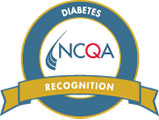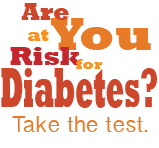Type 2 Diabetes
Type 2 Diabetes is a common genetic disease which is modified by the environment and is more common than Type 1 Diabetes. Around 90-95% of people with diabetes have Type 2 Diabetes. There are several key differences between Type 1 and Type 2 Diabetes. Type 2 Diabetes runs in families and most often there is one or more family members who have the disease whereas people with Type 1 Diabetes commonly do not have other family members with Type 1 Diabetes. The most important difference is in the hormone insulin. People with Type 1 Diabetes don’t produce insulin at all; people with Type 2 Diabetes produce insulin, but their bodies don’t use it correctly. People with Type 2 can be insulin resistant, when their cells don’t respond to insulin as they should. They can also be unable to produce enough insulin to handle the glucose in their body. Insulin is needed to allow the glucose to travel from the blood stream into our cells, where it’s used to create energy. In Type 2 Diabetes, genetics and lifestyle choices affect the expression of high blood sugar.
Type 2 used to be called adult onset diabetes or non-insulin dependent diabetes because it was diagnosed mainly in people over the age of 40. Plus early in the disease, patients do not need insulin (they weren’t dependent on insulin). However, more children are starting to be diagnosed with Type 2 and insulin is used more frequently, so the names are no longer correct.
Type 2 Diabetes is usually associated with being overweight (BMI greater than 25), unhealthy eating choices, and lack of exercise. And while it’s true that too much body fat and physical inactivity does increase the likelihood of developing Type 2, even people who are fit and trim can develop this type of diabetes.
Being told that you have Type 2 Diabetes can be frightening. It is a chronic condition that you will deal with for the rest of your life, but it doesn’t have to control your life. Since we now have better medications and together with better lifestyle choices, the complications are preventable with multiple therapies.
Type 2 Diabetes Symptoms
The symptoms of Type 2 Diabetes develop gradually so many people do not notice symptoms. The diagnosis of Type 2 Diabetes typically happens when people go to the doctor for something else (eg fatigue, increased urination, infection or some other medical issue). The symptoms develop gradually because, if you have the insulin resistant form of Type 2, it develops over years and takes time for the effects of insulin resistance to progress to diabetes. Along with insulin resistance your body doesn’t produce enough insulin to use glucose. Your body will be able to “make do” with lower insulin levels for a while, but eventually, you will start to notice the following symptoms.
• Fatigue: Your body isn’t getting the energy it needs from the food you are eating, so you may feel more tired.
• Extreme thirst: No matter how much you drink, it feels like you are still dehydrated. When there is too much glucose (sugar) in your blood, your kidneys filter out the glucose and that pulls water out into the urine as well. This is associated with increased urination and dehydration.
• Frequent urination: this is related to drinking so much more in an attempt to satisfy your thirst. Since you are drinking more, you will have to urinate more. Additionally, the body will try to get rid of the excess glucose through urination.
• Extreme hunger: Even after you eat, the glucose (and calories) is spilling out of your body and you may still feel hungry. Your muscles aren’t getting the energy they need from the food because the other the glucose isn’t entering the muscle and providing energy. Therefore, the muscles and other tissues send a “hunger” message, trying to get more energy for the body.
• Weight loss: You may be eating more but still losing weight. Since your body is spilling out calories and is not able to use glucose, it turns to using fat and starts to break them down in order to create energy. That will cause you to lose weight.
• Infections: The effects of Type 2 Diabetes make it harder for your body to fight off an infection, so you may experience frequent infections. Women may have frequent vaginal (yeast) and/or bladder infections. That is because the body’s ability to fight infection is inhibited and bacteria or yeast can flourish when there are high levels of glucose in the blood.
• Slow wound healing: Similar to the body’s inability to fight off infections, it might take longer for wounds (even small cuts) to heal. The high blood glucose level affects how well white blood cells (which are in charge of healing wounds) work.
• Blurry vision: In an attempt to get more fluid into the blood to counteract the high blood glucose level, your body may pull fluid from your eyes. You may have trouble focusing, leading to blurry vision which can last for months even after the blood sugar improves.
These are some of the more common symptoms associated with Type 2 diabetes, but you may not experience them all. If you are concerned about your health and think you have diabetes, make an appointment with your doctor to discuss your symptoms and be tested.
![]()












